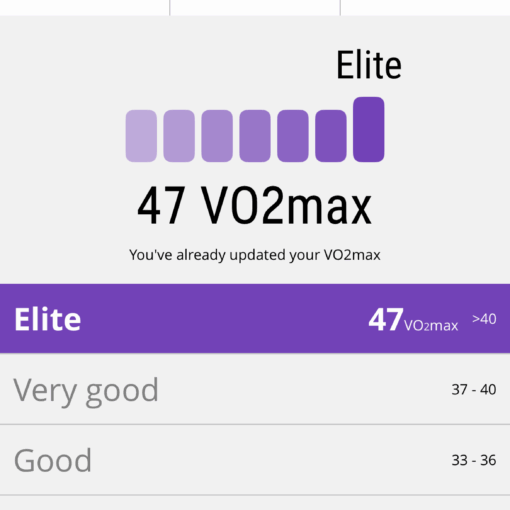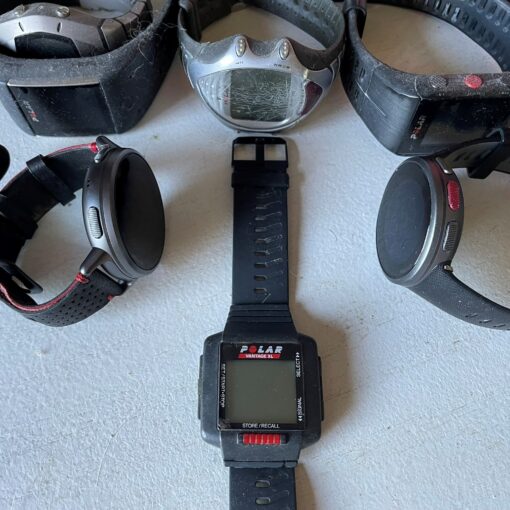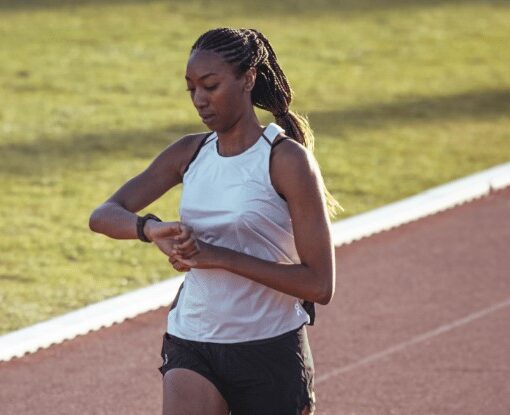The Polar H10 transmitter accuracy comes from using ECG (Electrocardiography) the same technology used for medical diagnostic tests. From the beginning, August 5th, 1986, using my Polar Vantage XL, until today I have worn the Polar chest strap. I have used a variety of Polar watches with optical sensors, but because I have a pacemaker, I want the accuracy of the chest strap. Scroll down to learn more about the Polar H10 transmitter accuracy.
The Polar H10 is widely regarded as the gold standard for heart rate tracking accuracy among consumer fitness devices. For athletes, researchers, and anyone serious about their physiological data, it remains the benchmark against which all other heart rate monitors are measured.
What Makes the H10 So Accurate?
The secret to the Polar H10’s exceptional accuracy lies in its technology. Unlike wrist-based watches that use optical sensors, the H10 is a chest strap monitor that uses electrocardiography (ECG).
- ECG (Electrocardiography): This method measures the electrical signals generated by your heart as it contracts. It’s the same technology used in medical settings for diagnostic tests. By placing electrodes directly on the skin near the heart, the H10 captures the heart’s electrical activity with minimal interference. This results in a direct, highly accurate measurement of your heart rate.
- PPG (Photoplethysmography): In contrast, most smartwatches and fitness trackers use PPG. This involves shining a green light onto your skin and measuring the light that reflects off your blood vessels. As your heart beats, the volume of blood in your vessels changes, altering the amount of light reflected. While convenient, this method is indirect and can be easily thrown off by factors like skin tone, tattoos, wrist movement, and poor sensor contact, especially during high-intensity exercise.
Because ECG directly measures the heart’s electrical impulses, it’s inherently more reliable and less prone to the motion artifacts that plague wrist-based optical sensors.
Put to the Test: How Accurate Is It Really?
Numerous independent studies and tech reviews have validated Polar’s claims. When compared against medical-grade ECG equipment in a controlled setting, the Polar H10 consistently shows a near-perfect correlation.
For example, a study published in the Journal of Medical Internet Research found the Polar H10 to be the most accurate consumer wearable for measuring heart rate, with a mean absolute error of less than 1 beat per minute (bpm) compared to a clinical ECG.
This level of precision holds true across various activities, from steady-state cardio like running and cycling to high-intensity interval training (HIIT) where heart rate fluctuates rapidly. While optical sensors often struggle to keep up with these quick changes, the H10 captures them almost instantaneously.
Who Needs This Level of Precision?
While the H10’s accuracy is impressive, is it necessary for everyone?
- Serious Athletes and Coaches: For those training in specific heart rate zones, accuracy is paramount. The H10 ensures that you’re hitting the right intensity for optimal performance gains and avoiding overtraining.
- Researchers: In sports science and physiological research, clean, reliable data is non-negotiable. The H10 provides research-grade data in a convenient, consumer-friendly package.
- Health-Conscious Individuals: People monitoring their heart rate for health reasons or tracking their recovery using Heart Rate Variability (HRV) will benefit immensely from the H10’s precision. Polar’s Orthostatic Test, which uses the H10, is a great example of this.
- Casual Fitness Enthusiasts: If you’re just looking for a general idea of your effort during a workout, a good quality wrist-based tracker is often sufficient. However, if you’ve ever been frustrated by nonsensical heart rate readings from your watch during a workout, the H10 is the definitive solution.
In short, the Polar H10 has earned its reputation as the king of heart rate accuracy. By using proven ECG technology, it delivers reliable, precise data that you can trust, workout after workout. If accuracy is your top priority, there is no better choice.




